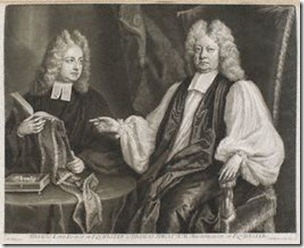 Another in an occasional series of gadget reviews, and more general thoughts on books. This time I look at the Amazon Kindle, my latest gadgety purchase – I have the WiFi only version with added leather carry case. The Kindle is an electronic device onto which books can be downloaded from a range of sources. In a sense the device is a side issue, Kindle software is available for smartphones (I have it on my HTC Desire), and computers. The main action for the Kindle is in the ecosystem: it makes it very easy to spend money on Amazon!
Another in an occasional series of gadget reviews, and more general thoughts on books. This time I look at the Amazon Kindle, my latest gadgety purchase – I have the WiFi only version with added leather carry case. The Kindle is an electronic device onto which books can be downloaded from a range of sources. In a sense the device is a side issue, Kindle software is available for smartphones (I have it on my HTC Desire), and computers. The main action for the Kindle is in the ecosystem: it makes it very easy to spend money on Amazon!
There are quite a few books available in the Kindle Store on Amazon, both free and paid. The paid offerings are a little cheaper than their paper equivalents but not hugely so. In addition PDF files can be read using the device, it will also play MP3 audio files. The Kindle Store also has links out to places where free content can be downloaded. For example, Project Gutenberg holds a wide variety of out of copyright material in a variety of e-book formats.
As long as you’re prepared to compromise a little you’ll not run short of things to read – I’d like to read the Patrick O’Brian Aubrey-Maturin series but they are not yet available for download. Only three of the top ten Amazon bestsellers are available in Kindle format at the moment. So far I’ve bought “Trilobite!” by Richard Fortey and “22 days in May” by David Laws. I also have “Sustainable Energy – without the hot air” by David Mackay which I got as a free download, and converted to an appropriate format using Calibre e-book Management, this is available as a community conversion of the original HTML files. Books can be transferred to the Kindle by WiFi, or direct cable connection. Buying books is magically easy – press button, wait a minute and you’re done!
Compared to an HTC Desire the Kindle interface feels rather clunky, I kept wanting to change pages by touch! Having said this moving from page to page is ergonomically easy: there are a couple of handy page forward / page backward buttons suited to either handedness. Page changes feel ever so slightly ponderous with a bit of a flash as the page changes. The battery life is very good, the display is e-ink based and so static display takes no power, only switching pages requires power. The display size is about right and it is very nice to read from, when I first opened the device I assumed the picture on the screen was a piece of paper for display purposes. There are a range of options for adjusting text size, spacing and so forth, although I found some glitches with text size control.
The Kindle is ideal for plain text, however for text with diagrams it is a bit hit-and-miss, although the quality of the display is good enough to show quite detailed greyscale images in the case of the Fortey book these have simply not been included by the publisher. The Mackay book includes figures but the placement of the figures in the text has largely been done automatically and is a bit wobbly. I’d really like to try a book with illustrations which have been done properly – any recommendations then please comment.
The benefit of the Kindle with non-fiction is that searching, bookmarking, and highlighting are all relatively straightforward. I have religious objections against making marks in paper books – I think as a result of using the library as a child. It’s also possible to add notes to a book and to see the “favourite” notes of others.
The problem is the Kindle misses the display aspects of book owning and reading; my house is full of books collected over 20 years. They are my extended phenotype; they tell you something about me. If you visit my house you can see my books – you might want to borrow one. The Kindle cuts this away, you can’t see what is on my Kindle, and if even if you could, you couldn’t borrow it. I’ve tried to replicate the bookshelf aspect in my Shelfari account, where you can see what I am reading and what I have read. I’m also missing the pile of books beside my bed. I’m an old-fashioned animal that misses physical objects.
Overall: not at all bad, reading raw text is comfortable, the whole buying new text is frighteningly easy, and a range of formats can be read. I’m looking forward to using the Kindle to avoid my mortal holiday fear – that I might run out of things to read!



